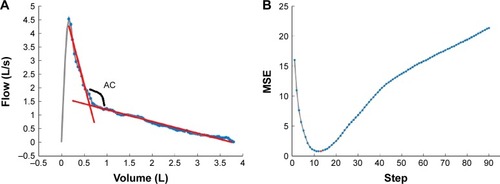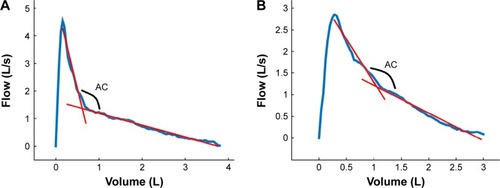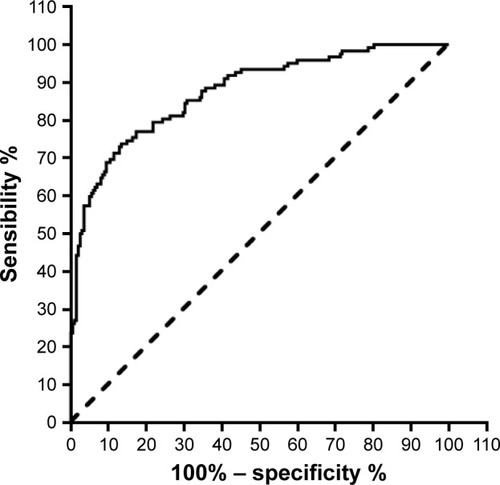Figures & data
Figure 1 Example of the measurement of AC.
Abbreviations: AC, angle of collapse; MSE, mean square error.

Table 1 Participants’ characteristics
Table 2 AC of patients with different degree of airflow limitation and EI
Table 3 The comparison between high and low EI patients with airflow limitation
Figure 2 AC of patients with high and low EI.
Abbreviations: AC, angle of collapse; EI, emphysema index; FEV1, forced expiratory volume in 1 second.

Table 4 Relationship between pulmonary function parameters and emphysema index in univariate correlation analysis
Table 5 Relationship between pulmonary function parameters and emphysema index in multiple regression analysis
Table 6 The AUC of ROC curve of AC and other pulmonary function parameters

